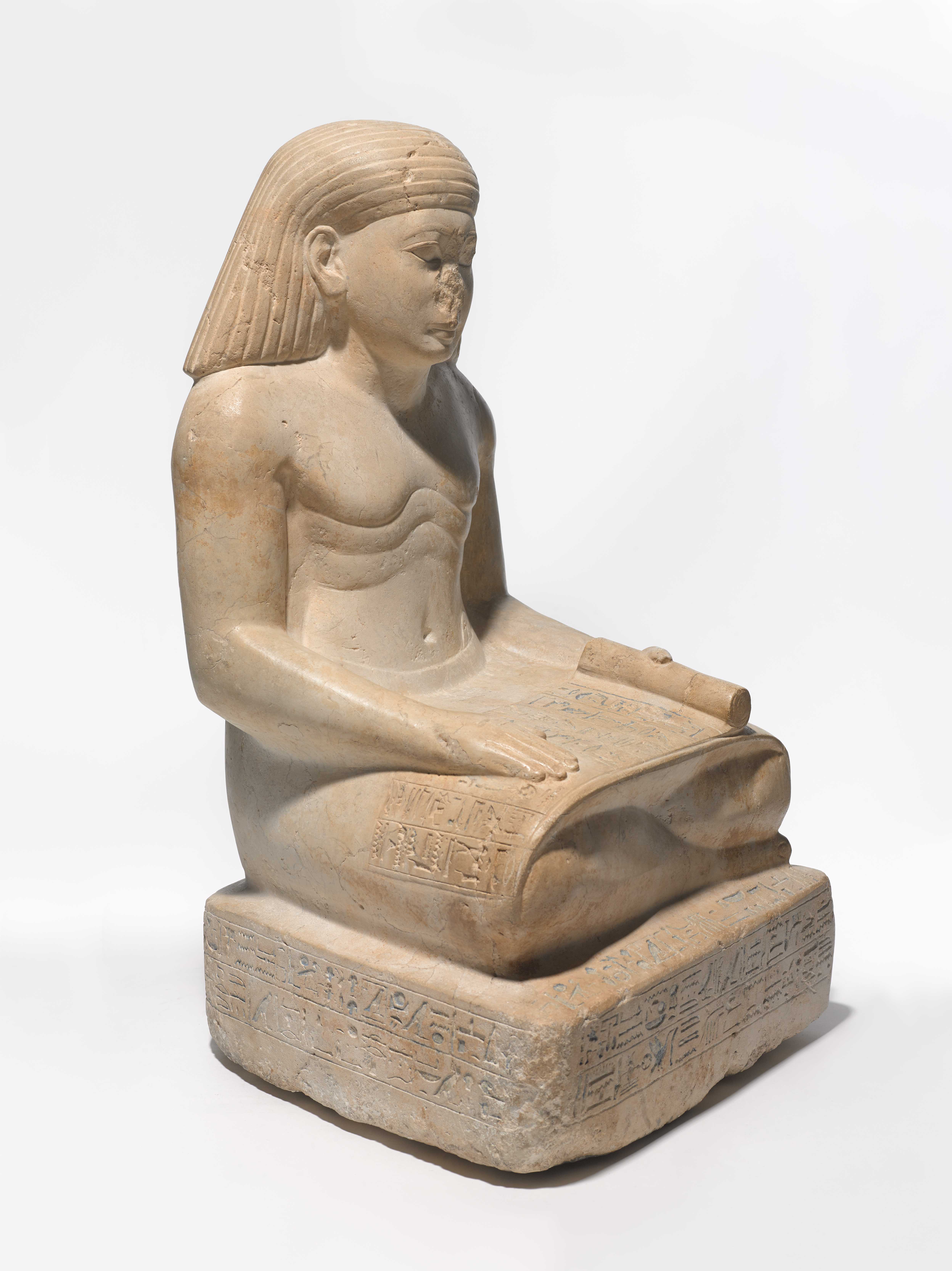
You’ve probably noticed that a lot of ancient Egyptian statues have broken noses. Now, for the first time, an exhibition is explaining why. And it’s probably not for the reason you think.
As revealed in “Striking Power: Iconoclasm in Ancient Egypt” at the Pulitzer Arts Foundation in St. Louis, this recurring damage was no accident, but a targeted destruction motivated by political and religious concerns.
The show is curated by Edward Bleiberg, the Brooklyn Museum’s senior curator of Egyptian, classical and ancient Near Eastern art, and Stephanie Weissberg, an associate curator at the Pulitzer. It features 40 Egyptian artworks on loan from the New York museum, contrasting damaged objects with ones that remain intact.
“The most common question we get at the Brooklyn Museum about the Egyptian collection of art is ‘Why are the noses broken?’” Bleiberg told artnet News. “It seemed like it would be a good idea to actually figure out what the answer is.”
With sculptures this old, it seems natural that there would be some wear and tear, or that noses might shatter when pieces inevitably fall over at some point over the millennia. But 2-D relief works often show the same type of damage to the face, suggesting a deliberate pattern.
Akhenaten and His Daughter Offering to the Aten. New Kingdom, Dynasty 18, Amarna Period, reign of Akhenaten, circa 1353–1336 BC. Made for a temple in Hermopolis Magna, Egypt. Photo courtesy of the Brooklyn Museum, Charles Edwin Wilbour Fund.
As it turns out, Christians and even some pharaohs actually had a habit of vandalizing artwork due to an entrenched culture of iconoclasm. The deliberate destruction of artworks was a way of counteracting the cultural and political power of the image—a world view that resonates across the centuries, as seen in the destruction wrought by ISIS in recent years at ancient historical sites in the Middle East.
“The Egyptians made these images as a resting place for a supernatural being. These are the places where human beings can have direct contact with the gods, or deceased human beings who have been transformed into a divine spirit,” explained Bleiberg. “When they are damaged, it interferes with the communication between the supernatural and people here on earth.”
While one might think that communication with spirits would be desirable, sometimes those who were seeking to concentrate their power wanted the exact opposite—to break it off.
And when you think about how hard these basalt and granite sculptures are, it becomes even more obvious that this defacement was intentional. “These would have been quite difficult to damage,” added Weissberg. “The sheer difficulty and effort involved in making modifications to these works really underscores the urgency and perceived importance of these objects.”
Hatshepsut. New Kingdom, Dynasty 18, reign of Hatshepsut, circa 1478–1458 BC. Said to be from Thebes, Egypt. Photo courtesy of the Brooklyn Museum, Charles Edwin Wilbour Fund.
The exhibition highlights two examples. When Hatshepsut died after 22 years of ruling as co-pharaoh with her stepson Thutmose III (who ruled 1479–1425 BC), he attempted to erase her from history. By targeting artworks bearing her likeness, he was trying to ensure succession would pass through his line, and not his late stepmother’s.
And then there’s Tutankhamun’s father, Akhenaten, who ruled from 1353–1336 BC and destroyed monuments to the god Amun in his effort to remake Egyptian religion to revolve around one god, Aten, a solar deity. But when Akhenaten died, the Egyptian people resumed traditional worship. Suddenly, temples and monuments honoring Aten and the late pharaoh were the ones that faced destruction.
In late antiquity, other objects were destroyed as Christianity, prior to the rise of Islam, became increasingly prevalent in Egypt. The ancient Egyptian gods were still seen as a threat, and defacing their statues was one way to prevent their worship and break their power.
But why target the sculptures’ noses, rather than destroy the work outright? “The nose is the source of breath, the breath of life—the easiest way to kill the spirit inside is to suffocate it by removing the nose,” said Bleiberg. “The statues are left in place as a demonstration of the triumph of Christianity.”
See more photos from the exhibition below.
Crown Prince Khaemwaset. New Kingdom, Ramesside Period, reign of Ramesses II, circa 1279–1213 BC. From Karnak Temple, Egypt. Photo courtesy of the Brooklyn Museum, Charles Edwin Wilbour Fund.
Scribe and Treasurer, Sety. New Kingdom, Dynasty 18, reign of Thutmose III, circa 1479–1458 BC from Egypt. Photo courtesy of the Brooklyn Museum, Charles Edwin Wilbour Fund.
Sarcophagus Lid for Pa-di-Inpu. Ptolemaic Period, circa 305–30 BC. Photo courtesy of the Brooklyn Museum, Charles Edwin Wilbour Fund.
Djehuti. New Kingdom, early Dynasty 18, ca. 1539–1390 BC. From Thebes, Egypt. Photo courtesy of the Brooklyn Museum, Charles Edwin Wilbour Fund.
“Striking Power: Iconoclasm in Ancient Egypt” is on view at the Pulitzer Arts Foundation, 3716 Washington Boulevard, St. Louis, Missouri, March 22–August 11, 2019.